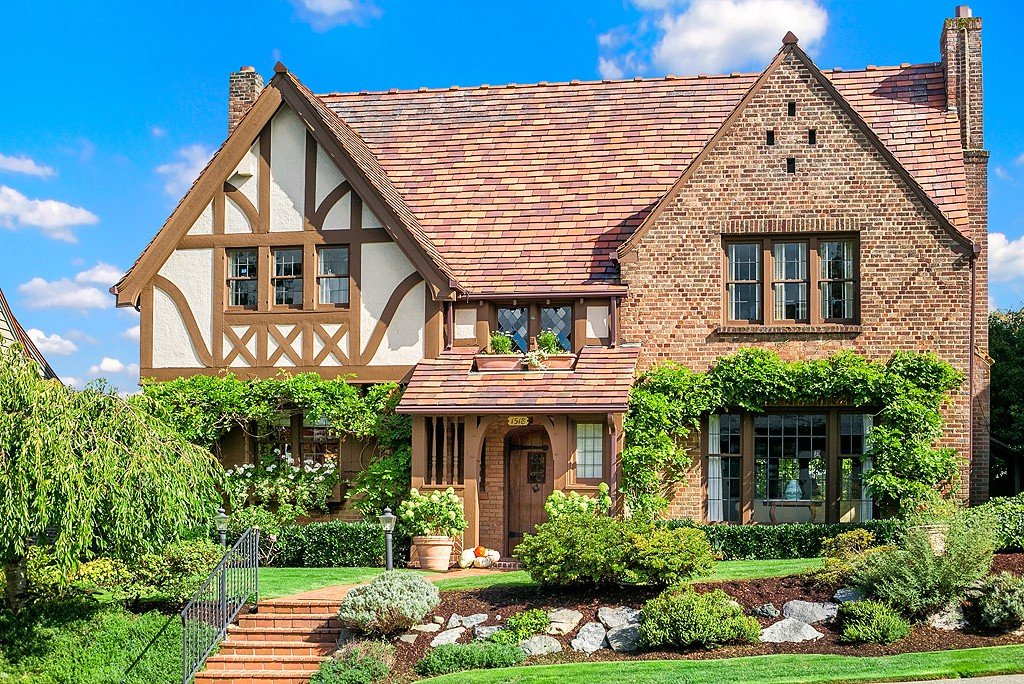#7186. Elegant Tudor Facade: Harmony of Brick and Half-Timbering in a Classic Country Home
This house is an excellent example of Tudor-style architecture, combining classic elements of this tradition with modern solutions. The facade displays the characteristic asymmetrical composition that is one of the distinctive features of Tudor style. The left portion of the facade features the traditional Tudor half-timbering technique – with decorative wooden beams against a light stuccoed surface, creating a recognizable geometric pattern.
The right portion of the facade is constructed from reddish-brown brick, adding an interesting contrast and textural variety. Tall gables with steep slopes of the terracotta-toned ceramic tile roof emphasize the vertical composition. The window openings with traditional Tudor-style muntins are framed with dark frames, intensifying the contrast with the main facade materials. Particularly noteworthy is the small balcony with floral arrangements, giving the house a cozy, lived-in character.
The entrance is designed as a small portico with wooden columns, creating a sheltered space in front of the door. Facade design in this style requires careful attention to details – from material selection to the development of ornamental elements. When creating your own Tudor-style project, it's worth paying attention to the combination of different textures (stucco, brick, wood), contrasting color schemes, and characteristic details such as half-timbering elements and window muntins.
The landscape design perfectly complements the architectural solution: climbing plants on the facade, a well-maintained lawn, and soft lines of flower beds create an organic framing for this exquisite home. The multi-level approach to landscaping using decorative stones and various plants creates a dynamic composition that emphasizes the architectural merits of the building.
